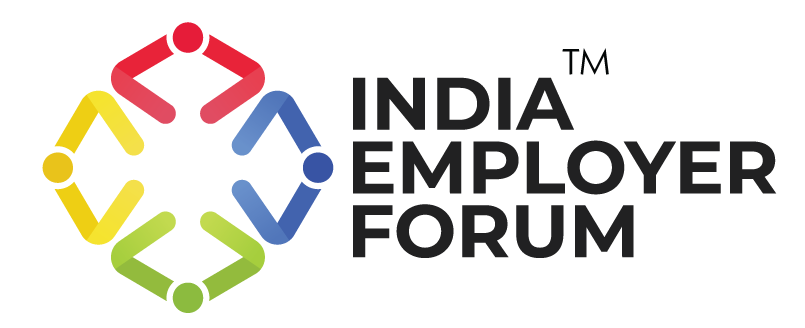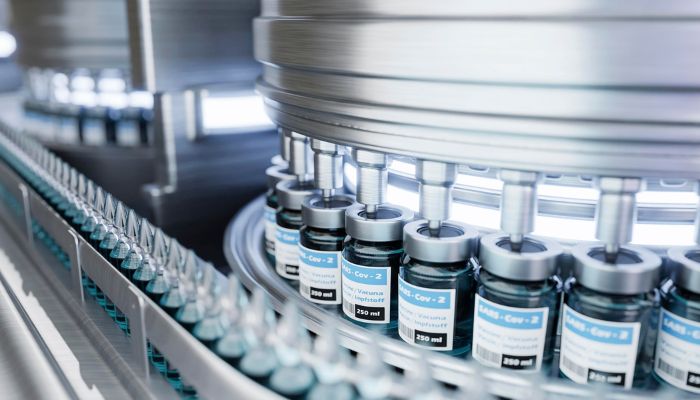How India Is Transforming Global Pharma: From Generics to Innovation
The pharma industry in India is entering a dynamic phase of growth, driven by innovation, digital transformation, and a strong global reputation in generics and vaccine manufacturing. As the world’s third-largest producer of pharmaceuticals by volume and 14th by value, India supplies more than 50% of global vaccine demand, 40% of generics consumed in the U.S., and 25% of all UK medicines. The industry, currently valued at around USD 55 billion, has been instrumental in ensuring global access to affordable medicines and is expected to reach USD 130 billion by 2030, growing at a CAGR of 11-13%.
The strength of the pharma sector in India lies in its well-established generics ecosystem, cost-effective manufacturing, and a large pool of skilled scientists and engineers. Indian companies are also expanding into high-value segments such as biosimilars, speciality drugs, and innovative therapies, while simultaneously strengthening their contract development and manufacturing (CDMO/CRAMS) capabilities. This dual approach of cost leadership and value innovation positions India’s pharma industry as a critical player in the global healthcare landscape for the next five years and beyond.
Growth of the Pharma Industry in India: Tracking Trends and Potential
AI-Powered Drug Development and Digital Pharma – India’s pharma sector is rapidly adopting digital tools, AI, and machine learning to enhance R&D efficiency and accelerate time-to-market. According to NASSCOM, Indian pharma companies investing in AI and analytics could reduce drug discovery time by 30–40% and cut costs by up to 20%. Companies like Dr. Reddy’s and Sun Pharma are already piloting AI models for clinical trial selection and predictive toxicology. Meanwhile, the digitisation of sales, marketing, and supply chains is expected to improve efficiency, compliance, and patient engagement, creating demand for clinical data scientists, digital transformation leads, and health IT experts.
Biosimilars and Biologics
India’s Next Export Engine – As global biologics worth over USD 90 billion face patent expiry by 2030, Indian pharma is intensifying its focus on biosimilars and biologics. The domestic biosimilars market, currently at USD 3 billion, is projected to grow to USD 10 billion by 2030, driven by rising chronic disease prevalence and demand from North America and Europe. Biocon, Lupin, and Zydus Lifesciences are leading biosimilar exports, especially in oncology, rheumatology, and diabetes. The government’s support via the PLI scheme for biopharmaceuticals further enhances India’s manufacturing and R&D capabilities in this segment.
CDMO/CRAMS
India as a Global Manufacturing Hub – India is emerging as a preferred destination for Contract Development and Manufacturing Organizations (CDMOs) and Contract Research and Manufacturing Services (CRAMS) due to its cost advantage, regulatory track record, and technical expertise. The Indian CDMO market, valued at USD 12 billion in 2024, is expected to cross USD 25 billion by 2030. Global pharma giants are outsourcing not just manufacturing but also early-stage R&D to Indian firms. This shift is creating high-skill roles in formulation development, process engineering, and regulatory documentation, particularly in high-value APIs and complex generics.
Domestic Pharma Demand Surge and Healthcare Access
India’s domestic pharmaceutical market is growing steadily, fueled by expanding healthcare access, a growing middle class, and the rise of non-communicable diseases (NCDs). With initiatives like Ayushman Bharat and a target to establish 150,000 Health and Wellness Centres, the government aims to dramatically increase drug consumption across rural and semi-urban India. According to IQVIA, India’s domestic pharma sales are expected to grow from USD 25 billion in 2024 to USD 50 billion by 2030, with Tier II and Tier III cities contributing over 40% of the growth. This trend opens up opportunities in branded generics, nutraceuticals, and chronic care therapies.
Policy Push and Global Market Integration
The Indian government is actively supporting the sector’s global competitiveness through the Production Linked Incentive (PLI) schemes for APIs, key starting materials (KSMs), and bulk drugs. These programs, with a total outlay of over INR 15,000 crore (USD 1.8 billion), aim to reduce dependence on Chinese imports and boost self-reliance. Additionally, India’s move towards regulatory harmonisation with the USFDA, EMA, and WHO-GMP is expected to streamline exports and improve global trust. As of 2024, India has over 650 USFDA-approved manufacturing sites, the highest outside the U.S., and this number is expected to grow. Such initiatives are vital for expanding exports to Africa, Southeast Asia, and Latin America, which are projected to contribute 25–30% of India’s pharma exports by 2030.
Related Reads
Industry Outlook: Agritech in India, 2025–2030
Future Demanding Roles in India’s Pharma Industry
As India’s pharmaceutical industry shifts toward advanced R&D, digital health, global regulatory alignment, and sustainable practices, the talent landscape is evolving to accommodate tech-enabled, interdisciplinary, and globally-oriented roles. Below are some of the most critical emerging roles and what it takes to pursue them:
1.Clinical Data Scientist – Works at the intersection of data science and clinical research to analyze trial data, optimize patient recruitment, and ensure data integrity. Utilizes machine learning algorithms to interpret large datasets from clinical trials.
Skills: Proficiency in Python/R, clinical databases (CDISC/SDTM), statistical modeling, and biomedical data interpretation.
Education: Master’s/PhD in Biostatistics, Data Science, Bioinformatics, or Pharmaceutical Sciences. Clinical trial certifications (e.g., GCP) are advantageous.
2.Pharmacovigilance Analyst
Monitors and evaluates post-marketing drug safety data. Investigates adverse event reports, prepares risk assessment reports, and ensures regulatory compliance for global pharmacovigilance systems.
Skills: Knowledge of pharmacovigilance databases (Argus, ARISg), ICH guidelines, signal detection, and medical writing.
Education: Bachelor’s or Master’s in Pharmacy, Life Sciences, MBBS, or PharmD. Certifications in PV regulations (e.g., ICH E2E) are beneficial.
3.Regulatory Affairs Specialist
Ensures that pharmaceutical products comply with all relevant regulations from development through commercialization. Prepares submissions to regulatory agencies like USFDA, EMA, and CDSCO.
Skills: Strong understanding of regulatory frameworks (ANDA, NDA, DMF), documentation, and technical writing.
Education: BPharm/MPharm, MSc in Regulatory Affairs, or related life sciences. Specialized diplomas in regulatory sciences are often preferred.
4.Digital Health Strategist
Designs and implements digital healthcare solutions, such as mobile health apps, telemedicine platforms, and AI-powered diagnostics. Integrates digital tools into pharma marketing, patient engagement, and disease management.
Skills: Experience with UX/UI, health informatics, digital product development, data privacy (HIPAA/GDPR), and clinical validation.
Education: MBA in Healthcare Management, Master’s in Digital Health, Biomedical Engineering, or Health Informatics. Certifications in digital therapeutics or product management are useful.
5.Bioinformatics Engineer
Supports drug discovery and biotechnology research by developing algorithms and tools to analyze genomic and proteomic data. Plays a key role in precision medicine and biomarker identification.
Skills: Programming (Python, Perl), knowledge of genomics pipelines (BLAST, GATK), machine learning, and molecular biology.
Education: BTech/MTech in Bioinformatics, Computational Biology, or Biotechnology. A PhD is often preferred for research-intensive roles.
6.Formulation Development Expert
Designs and tests new drug formulations to improve stability, bioavailability, and patient compliance. Works with tablets, injectables, and novel delivery systems (e.g., liposomes, patches).
Skills: Knowledge of pharmaceutics, QbD (Quality by Design), GMP compliance, and analytical methods (HPLC, DSC).
Education: MPharm/PhD in Pharmaceutics, Industrial Pharmacy, or Pharmaceutical Technology. Experience with scale-up and validation processes is valued.
7.Sustainability Manager (Pharma)
Oversees the environmental impact of pharmaceutical operations, including waste management, green chemistry adoption, and ESG reporting. Ensures compliance with global sustainability standards.
Skills: Environmental compliance, lifecycle analysis (LCA), carbon footprint tracking, and sustainability reporting (GRI, ESG metrics).
Education: Master’s in Environmental Science, Industrial Engineering, or Sustainability Management. Certifications like ISO 14001 or LEED can enhance prospects.
India’s pharmaceutical industry stands at a pivotal juncture, poised to transition from a global manufacturing hub to a leader in pharmaceutical innovation. As Amitabh Kant, former CEO of NITI Aayog and G20 Sherpa, aptly stated at BioAsia 2025:
“The Indian pharmaceutical sector, known as the pharmacy of the world, has the potential to grow from $50 billion today to $150 billion by 2030 and $500 billion by 2047. However, for this to happen, it needs to shift gears from ‘Make in India’ to ‘Discover in India for the world’.”
This vision underscores the industry’s ambition to not only expand in scale but also to lead in innovation, particularly in areas such as biologics, biosimilars, and digital health solutions. With supportive government policies, a burgeoning talent pool, and increasing global demand, India is well-positioned to redefine its role in the global healthcare landscape.






